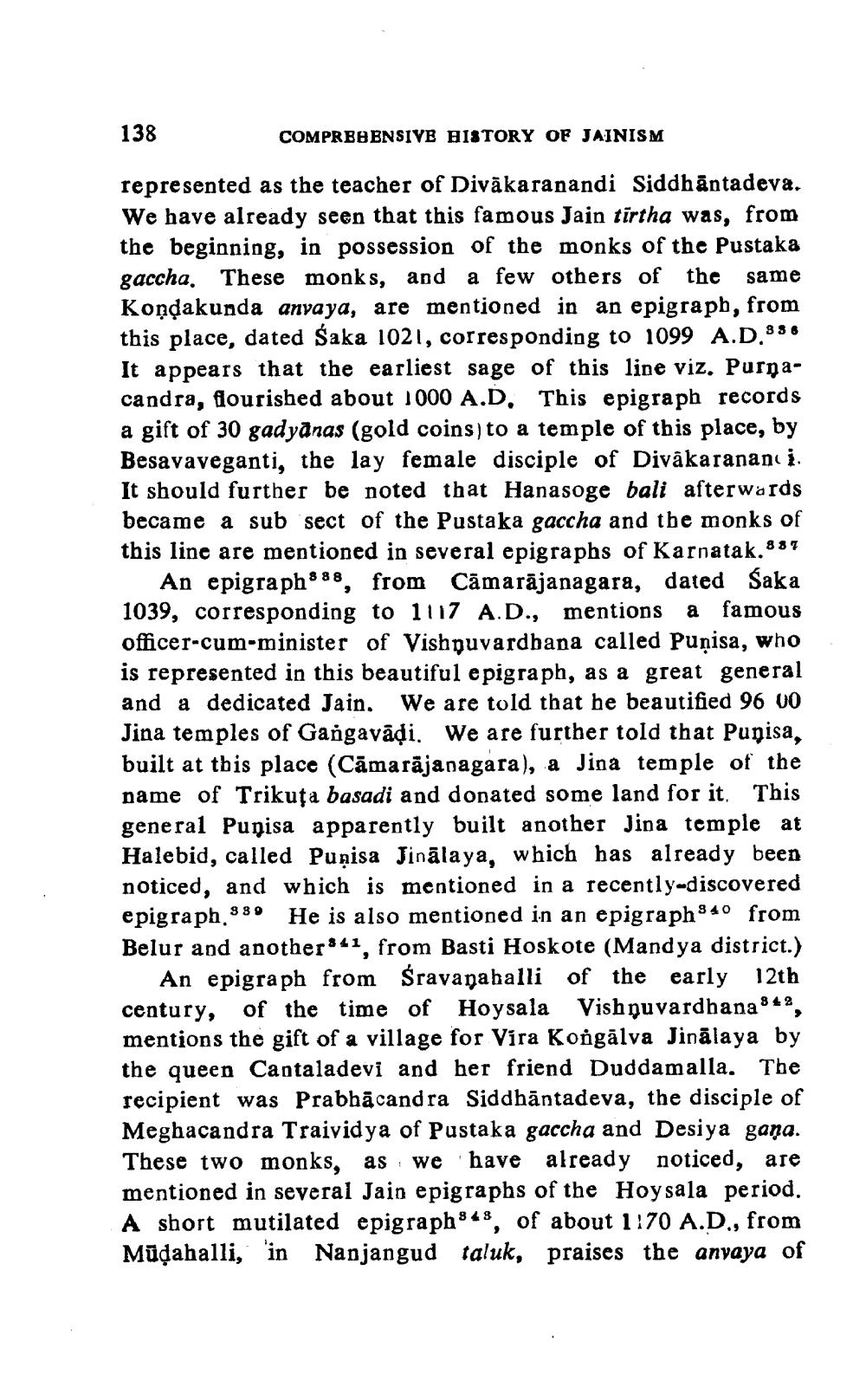________________
138
COMPRBO BNSIVE HISTORY OF JAINISM
represented as the teacher of Divākaranandi Siddhāntadeva. We have already seen that this famous Jain tirtha was, from the beginning, in possession of the monks of the Pustaka gaccha. These monks, and a few others of the same Kondakunda anvaya, are mentioned in an epigraph, from this place, dated Śaka 1021, corresponding to 1099 A.D.386 It appears that the earliest sage of this line viz. Purnacandra, flourished about 1000 A.D. This epigraph records a gift of 30 gadyānas (gold coins) to a temple of this place, by Besavaveganti, the lay female disciple of Divākarananı į. It should further be noted that Hanasoge bali afterwards became a sub sect of the Pustaka gaccha and the monks of this line are mentioned in several epigraphs of Karnatak.887
An epigraph 8 88, from Cāmarājanagara, dated Saka 1039, corresponding to 1117 A.D., mentions a famous officer-cum-minister of Vishnuvardbana called Puņisa, who is represented in this beautiful epigraph, as a great general and a dedicated Jain. We are told that he beautified 96 10 Jina temples of Gangavādi. We are further told that Punisa, built at this place (Cāmarājanagara), a Jina temple of the name of Trikuța basadi and donated some land for it. This general Punisa apparently built another Jina temple at Halebid, called Puņisa Jinālaya, which has already been noticed, and which is mentioned in a recently-discovered epigraph.880 He is also mentioned in an epigraph 940 from Belur and another841, from Basti Hoskote (Mandya district.)
An epigraph from Śravanahalli of the early 12th century, of the time of Hoysala Vishnuvardhana 8 +3, mentions the gift of a village for Vira Kongālva Jinālaya by the queen Cantaladevi and her friend Duddamalla. The recipient was Prabhācandra Siddhāntadeva, the disciple of Meghacandra Traividya of Pustaka gaccha and Desiya gana. These two monks, as we have already noticed, are mentioned in several Jain epigraphs of the Hoysala period. A short mutilated epigraph 9 43, of about 1170 A.D., from Müdahalli, 'in Nanjangud taluk, praises the anvaya of




